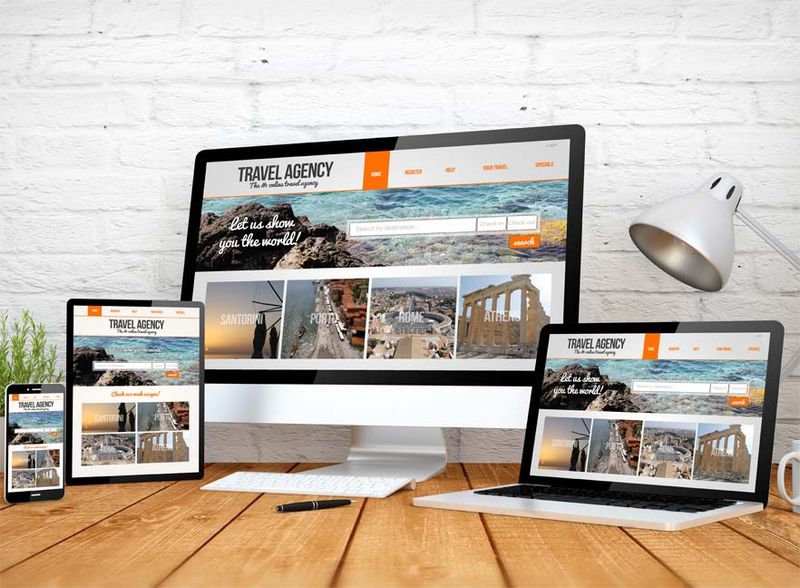Change Your Online Existence with Fort Worth Web Design Skills
Change Your Online Existence with Fort Worth Web Design Skills
Blog Article
Recognizing the Effect of Receptive Website Design on Mobile Traffic
In today's electronic landscape, responsive website design has actually ended up being essential in forming exactly how mobile website traffic engages with on the internet content. As the variety of mobile users remains to surge, the requirement for internet sites to flawlessly adjust to different display sizes comes to be progressively apparent. This flexibility not only enhances user experience but also plays a crucial function in retaining site visitors and decreasing bounce prices. In addition, search engines favor mobile-friendly websites, thus influencing search positions and presence. However, what are the hidden techniques that contribute to effective implementation, and exactly how do they even more influence mobile engagement?
Relevance of Mobile Compatibility
In today's electronic landscape, the significance of mobile compatibility can not be overemphasized. With the spreading of smartphones and tablet computers, more users are accessing the net using smart phones than ever. As a result, guaranteeing that sites are optimized for these devices is no more optional but an essential element of efficient electronic approach. Mobile compatibility straight influences a site's accessibility, capability, and overall performance, influencing individual engagement and complete satisfaction.
Incorporating responsive web layout is a crucial strategy to attaining mobile compatibility. This style method allows a website to instantly change its layout and web content based upon the display size and alignment of the tool being used (Fort Worth Local SEO). This adaptability makes sure that all users have a seamless experience, no matter of whether they are using a desktop computer, mobile phone, or tablet computer
In addition, mobile compatibility is closely connected to browse engine optimization (SEO) Companies have to focus on mobile compatibility to continue to be competitive and ensure their electronic presence is available to the broadest feasible target market, eventually driving development and engagement.
Enhancing Individual Experience
A seamless user experience stands at the heart of effective website design, acting as a critical aspect in preserving and involving site visitors. In the context of responsive internet layout, enhancing user experience on smart phones is crucial. As the variety of mobile individuals remains to rise, web sites need to adjust to various screen dimensions and positionings without endangering performance or aesthetic appeals. This versatility makes sure that individuals can conveniently browse and engage with web content, no matter the device they utilize.
Trick elements of an improved mobile user experience include quickly loading times, intuitive navigation, and accessible material. Instinctive navigating makes certain that individuals can locate details quickly, while obtainable material allows for readability and interaction without unneeded zooming or scrolling.
Furthermore, giving a consistent visual and functional experience throughout devices establishes count on and integrity, urging return visits. By focusing on these components, responsive website design not just deals with mobile audiences however additionally promotes a favorable assumption of the brand, ultimately enhancing general customer experience.
Boosting Mobile Engagement
To properly enhance mobile engagement, internet designers must focus on creating compelling and interactive experiences read this post here that mesmerize users' focus. Executing functions such as touch-friendly navigating, concise material, and user-friendly user interfaces can significantly improve user communication and complete satisfaction.

In addition, leveraging customization approaches, such as tailored material recommendations based on customer habits and preferences, can create a lot more significant interactions and urge repeat sees. By concentrating on these facets, internet designers can significantly improve mobile interaction, ensuring that customers stay engaged and purchased the web content, ultimately driving higher retention rates and customer fulfillment.
SEO Perks of Responsive Style
As web designers improve mobile interaction via responsive strategies, one more significant advantage emerges in the realm of seo (SEO) Receptive website design (RWD) plays a critical duty in enhancing an internet site's exposure and position on search engines. By making sure a smooth individual experience throughout gadgets, receptive style minimizes bounce rates, an important metric that internet search engine consider when figuring out site significance and top quality.
Google, which commands a considerable share of the search market, supporters for receptive style as the sector criterion. A single URL framework, assisted in by RWD, streamlines creeping and indexing procedures for internet search engine bots. This efficiency enhances a website's accessibility and makes it simpler for online search engine to comprehend and place content properly.
Additionally, receptive design enhances filling times, one more factor heavily weighted in Google's formulas. A much faster, more effective site enhances individual satisfaction, resulting in longer web page check outs and greater involvement levels, which link positively influence SEO rankings. Additionally, RWD sustains the implementation of optimized metadata and tags, guaranteeing that material is appropriately customized for mobile and desktop computer users alike.
Techniques for Effective Implementation
When implementing receptive website design, understanding essential approaches is necessary for success. Prioritize a mobile-first technique. By designing for smaller screens at first, developers can guarantee that their sites are useful and visually appealing on all tools. This method also aids streamline web content, concentrating on essential aspects that improve user experience.
Second, use flexible grid layouts and scalable images. An adaptable grid makes sure that the web site's design changes seamlessly throughout various display dimensions. Utilizing scalable pictures that adjust based on resolution prevents distortion and maintains photo top quality, enhancing the overall visual.
Third, enhance filling times. Usage techniques such as compressing images and minifying CSS and JavaScript files to guarantee rapid web page lots. Rate is vital for keeping mobile individuals who might abandon slow-loading sites.

Last but not least, leverage analytics to keep track of performance and individual behavior. Analytics offer understandings into just how individuals engage with the website, directing further optimization efforts to meet progressing requirements. By following these techniques, organizations can efficiently apply responsive website design, maximizing their mobile web traffic capacity.
Conclusion
Responsive website design plays a critical function in enhancing mobile web traffic by ensuring web sites come across various tools. By adjusting formats for different screen sizes, it substantially enhances user experience, lowers bounce rates, and increases see duration. Mobile-friendly websites gain concern in online search engine rankings, driving even more web traffic. This versatility attends to the growing number of mobile users, fosters engagement with instinctive navigating, and ensures quick packing times, which are essential for preserving visitors and enhancing total electronic presence.
In the context of responsive internet layout, boosting customer experience on mobile gadgets is vital.Key components of blog here an enhanced mobile individual experience include quickly filling times, user-friendly navigation, and easily accessible content.To properly enhance mobile interaction, internet designers should concentrate on developing interactive and compelling experiences that astound users' attention. Carrying out features such as touch-friendly navigating, succinct content, and user-friendly individual interfaces can substantially boost customer interaction and contentment.
Furthermore, RWD sustains the application of enhanced metadata and tags, ensuring that content is appropriately customized for mobile and desktop individuals alike.
Report this page